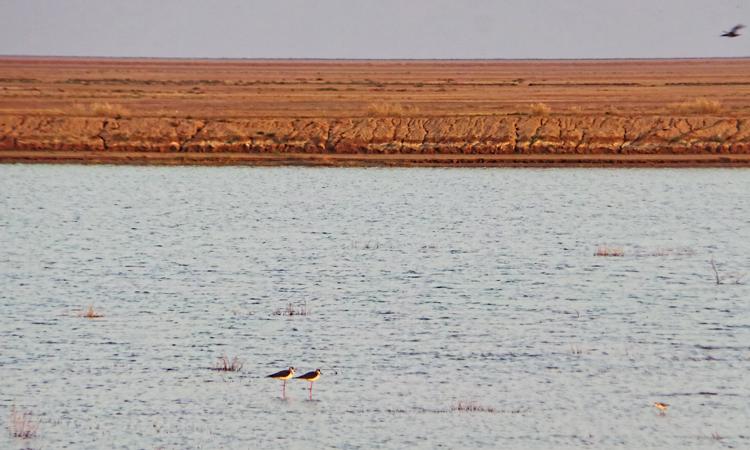
How often does one get to experience a terrain that is as dramatically transformative as The Little Rann of Kutch? With changing seasons, it adorns itself with different landscapes, thus, completely shifting shape, its functions and appeal.
The Little Rann of Kutch (LRK), a salt marsh in Gujarat, is a pristine, vast plain that stretches into the horizon. Sprawled over 3,570 sq. km, LRK is a unique landscape with characteristics of both wetlands as well as desert. This biodiversity of the landscape is due to seasonal rivers flowing through the area which go on to meet the sea from the Gulf of Kutch.
The seasonal inflow of water during monsoon transforms LRK into a large, shallow wetland. In subsequent warmer months though, the floodwaters evaporate, gradually transforming it into a saline, dusty desert. These seasonal water dynamics makes LRK a highly productive landscape--both ecologically and economically.
This wetland is a source for one-third of India’s total inland salt production. Besides producing salt, the region is also the main source of ginger prawn export. Though a seemingly stark landscape, it is rich in biodiversity and is an ecologically important area for wildlife and many local and migratory waterbirds. It is known to be the world's last refuge of the Indian Wild Asses and acts as a major nesting ground for the gorgeous Lesser Flamingoes--the only place outside Africa to serve as a conducive environment for the breeding of these magnificent birds.
Livelihoods of roughly 12,000 households are linked with the ecosystem services. The annual economic benefit from LRK is estimated at a whopping Rs 1.5 billion which includes tourism.
Unfortunately, the Little Rann of Kutch is at a risk of losing all these. It is being increasingly threatened by upstream hydrological regime changes. By increasing diversion and storage of water from the catchment into dams, the seasonal flow of freshwater into the LRK is reduced. Further, the blocking of creeks reduces the essential seawater inflow into the LRK which impinges on the natural interplay between salt production, prawn fishing and migratory patterns. Without the seasonal water flow dynamics, the LRK loses its unique ecological character, and subsequently, its productivity.
The Little Rann of Kutch is at a stage where by optimising fisheries and salt production in a sustainable manner, we can reverse this impending crisis. To successfully bring together developmental plans and this unique landscape’s natural offerings, we need to implement policies to balance upstream land use with the hydrological and ecological functions of the LRK.
‘Lets Invest in Nature’ (#LetsInvestInNature) is a special series of video stories designed by the Indo-German Biodiversity Programme. It is dedicated to estimating and mainstreaming the true economic value of biodiversity in business-related decisions and policy making. Watch this short video for more information.
/articles/little-rann-kutch